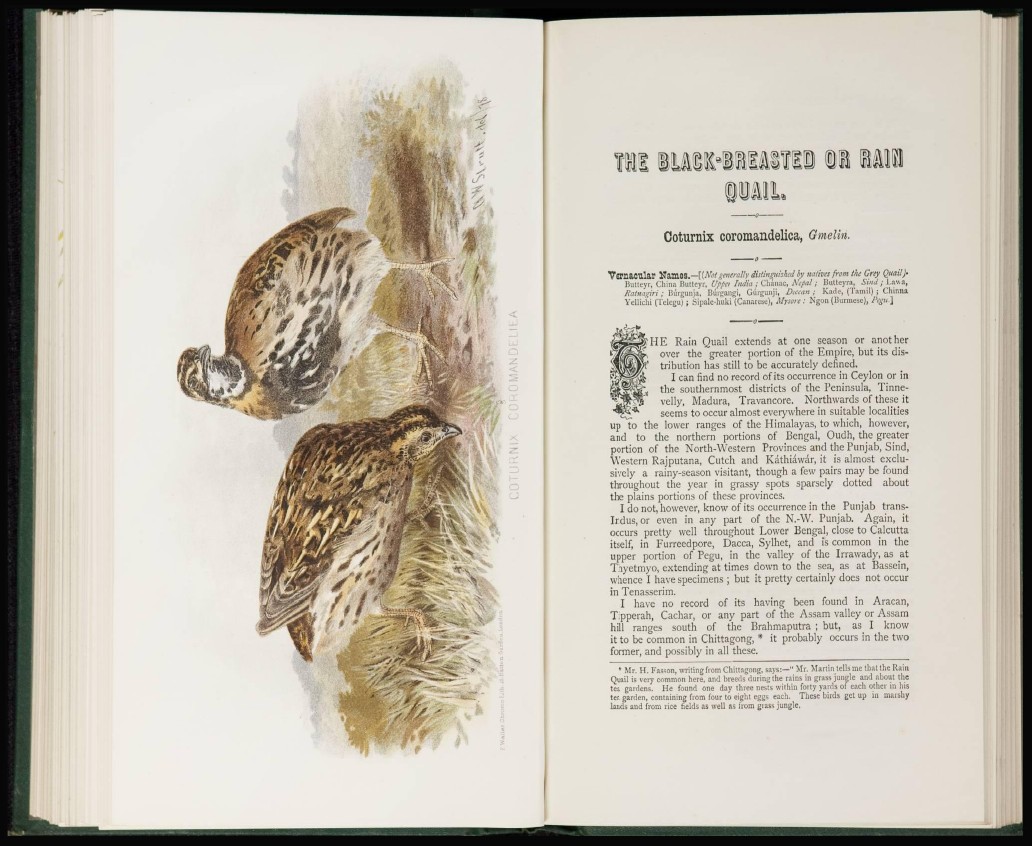
Coturnix coromandelica, Gmeliú.
Vernacular Names.— {{Not generally distinguished by natives from the Grey Quail)'
Butteyr, China Butteyr, Uppet India ; Chlnac, Nepal ; Biitteyra, Sind ; La«a,
Ratnagtri; Búrgunja, Búrgangi, Gúrgunji, Dcccan ; Katie, (Tamil); Chinna
Yellichi (Telegu) ; Sipale-huki (Canarese), Mysore : Ngon (Burmese), Pegu]
HE Rain Quail extends at one season or another
over the greater portion of the Empire, but its distribution
has still to be accurately defined.
I can find no record of its occurrence in Ceylon or in
the southernmost districts of the Peninsula, Tinnevelly,
Madura, Travancore. Northwards of these it
seems to occur almost everywhere in suitable localities
up to the lower ranges of the Himalayas, to which, however,
and to the northern portions of Bengal, Oudh, the greater
portion of the North-Western Provinces and the Punjab, Sind,
Western Rajputana, Cutch and Kathiawar, it is almost exclusively
a rainy-season visitant, though a few pairs may be found
throughout the year in grassy spots sparsely dotted about
the plains portions of these provinces.
I do not, however, know of its occurrence in the Punjab trans-
Indus, or even in any part of the N.-W. Punjab. Again, it
occurs pretty well throughout Lower Bengal, close to Calcutta
itself, in Furreedpore, Dacca, Sylhet, and is common in the
upper portion of Pegu, in the valley of the Irrawady, as at
Thyetmyo, extending at times down to the sea, as at Basscin,
whence I have specimens ; but it pretty certainly does not occur
in Tenasserim.
I have no record of its having been found in Aracan,
Tipperah, Cachar, or any part of the Assam valley or Assam
hill ranges south of the Brahmaputra ; but, as I know
it to be common in Chittagong, * it probably occurs in the two
former, and possibly in all these.
* Mr. H. Fas^on, writing from Chittagong, says:—" Mr. Martin tells me that ihe Rain
Quail is very common here, and hreeds during the rains in grass jungle and about the
tea gardens. He found one day three nests within forty yards of each other in his
tea garden, containing from four to eight eggs each. These birds get up in marshy
lands and from rice fields as well as from grass jungle,